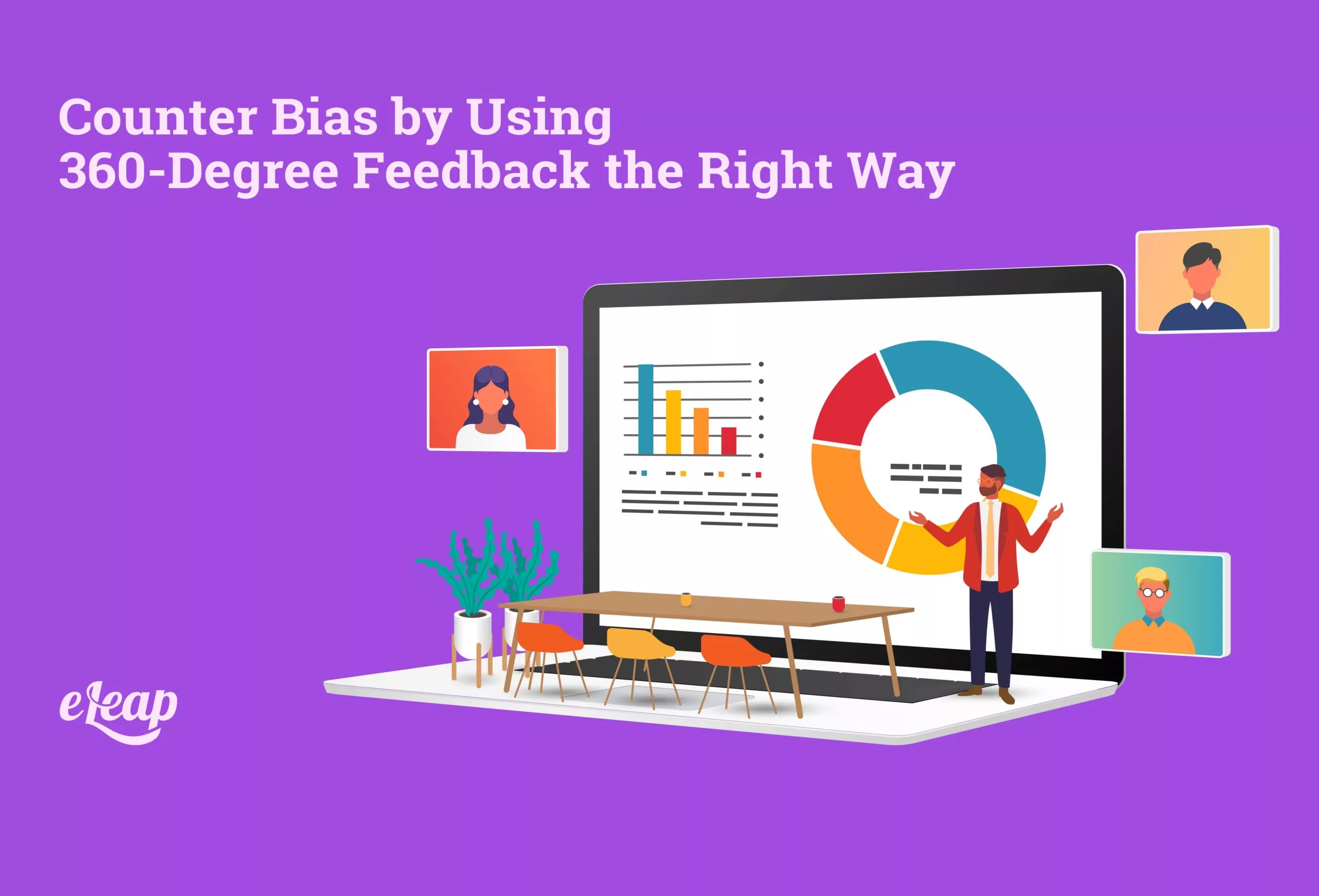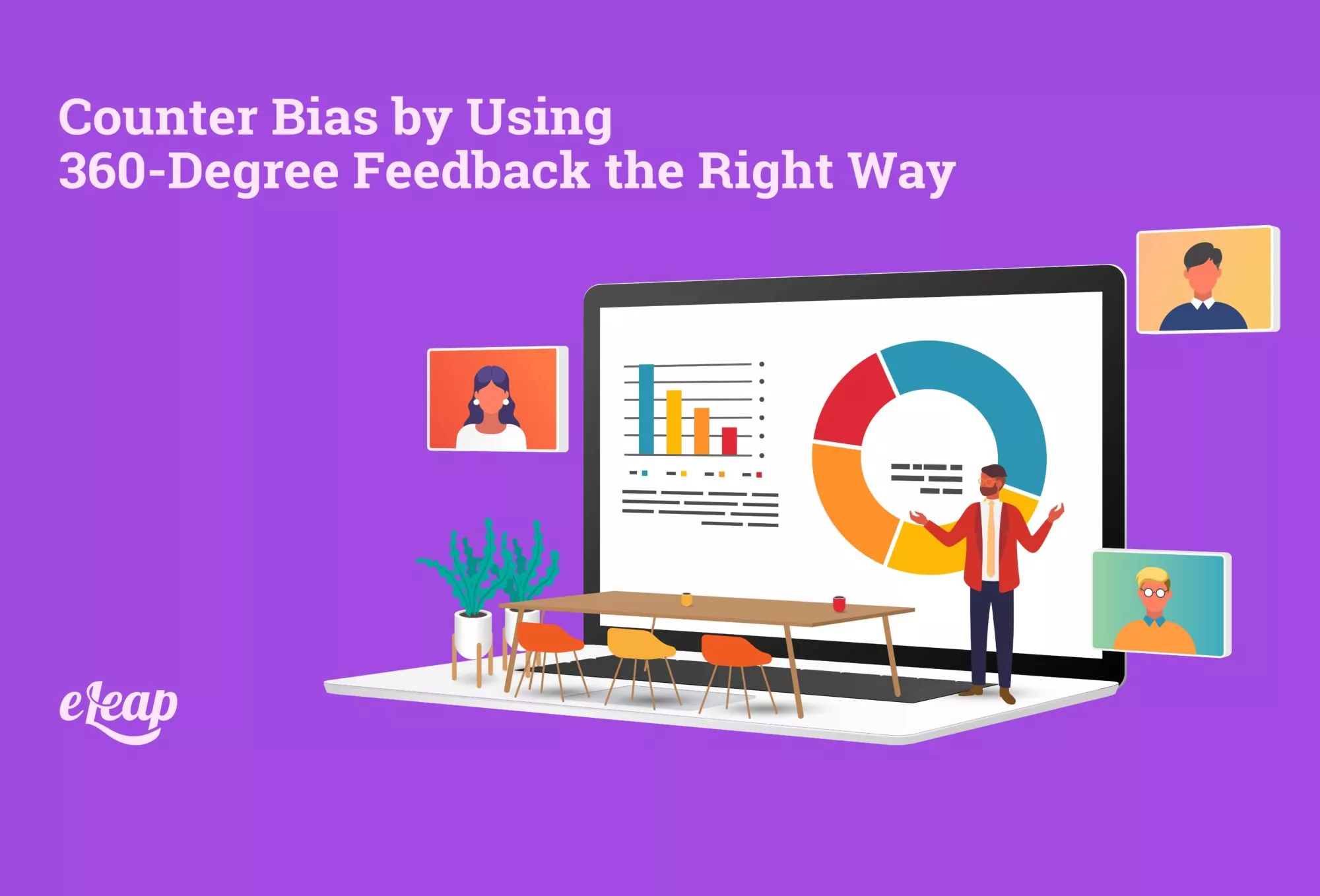Counter Bias by Using 360-Degree Feedback the Right Way

When performance reviews began using 360-degree feedback, the entire process was taken to new levels. It made the performance review a lot fairer when it comes to the employee, helping avoid the long-existing fear of the annual review. Explore how eLeaP’s Performance Management Platform can simplify evaluations, boost productivity, and drive measurable results.
The annual review is finished, and the constant performance assessment model dominates. 360-degree feedback eliminated bias in the workforce, helping certain employees to eliminate their anxiety.
Now, employees look at performance management and review as a way to achieve their goals instead of as a means of punishment. Reviews now help to support the individual employee’s needs and not just the company as a whole.
However, it’s important to note that asking for too much feedback from your employees can become a burden to them. This doesn’t achieve the goal of receiving accurate information, mostly because, at some point, the constant demand for feedback becomes monotonous, and your workers will become disconnected from the feedback process.
You must find a happy medium – the perfect bullseye that earns you an all-inclusive yet realistic and manageable performance management process.

How Does 360-Degree Feedback Work?
How does 360-degree feedback work? The 360-degree approach provides managers, directors, mentors, peers, and co-workers with multiple perspectives.
Managers provide the first set of feedback about employee behavior and attitude toward working in a team environment (i.e., how they treat people). Employees receive a separate report on how well they interact with peers (i.e., how they relate to other team members). They receive another report from those working with them daily, sharing their opinions about how the employee handles themselves while they are working together (i.e., how well they collaborate with the team).
After this is finished, the employee has a chance to provide feedback via a self-assessment. This report can include the same elements but gives management more intimate insight into how each employee feels about their performance and environment.
These reports are then collated into a single report that summarizes employees’ overall strengths and weaknesses through both personal and professional perspectives. Once all of this information is gathered, employees can use it with their team to identify areas where skills can be improved along with ways to better collaborate with others who work in other areas of focus within the organization.
For example, a manager can use 360-degree feedback during a performance review because it shows them exactly where they can improve and their strengths so they can make the right changes. Most importantly, a 360-degree feedback process eliminates bias. Let’s take a look at the different types of workplace bias.
Affinity Bias
Affinity bias, otherwise known as similarity bias, highlights the relationships people form with individuals who share similar hobbies, feelings, opinions, and past experiences. If this isn’t addressed, it will lead to managers showing bias toward employees that have similar personalities or interests, which garners anger from the rest of the team.
Confirmation Bias
Confirmation bias is the urge to judge someone based on your thoughts, feelings, or opinions instead of using an unbiased approach. This type of bias normally comes along with situations of sexuality, race, gender, age, religion, attractiveness, and more.
Recency Bias
Recency bias includes the habit of placing more importance on more recent events and experiences. When companies use annual performance reviews, it promotes this type of bias as achievements that may have happened several months before no longer seem significant.
Self-Rater Bias
This type of bias is the habit of an individual rating their performance based on how they see themselves instead of objective achievements. Normally, this form of bias leads to one of two situations.
The employee will discount their great performance because of poor self-image, or they will over-inflate their performance to match their over-inflated ego.
How to Counter Bias
Many organizations incorporate 360-degree feedback to counter bias. This is done by examining employees from every angle. You need to understand how to develop the right assessment questions, interpret performance data, and use that data to make the right decisions.
Three major approaches include comprehensive 360s, developmental 360s, and feedback surveys. Which type of 360 is best for your company depends on several factors, including the size and complexity of your organization and culture.
Comprehensive 360s include multiple sources of feedback and multiple methods for collecting the data for the assessment (i.e., surveys, self-assessments, focus groups). Although these 360s can be expensive to administer because of the amount of time and resources involved in implementation, these types of assessments can be very revealing in terms of creating a cohesive culture where everyone is working toward common goals. These goals include:
- Eliminating bias
- Helping new employees become comfortable in the workplace
- Giving management a new understanding of strengths and weaknesses
- Developing new leaders
Developmental 360s offers advice on skills or habits that have been previously addressed and can be easily developed through working with peers. These 360s tend to be less formal than comprehensive 360s; therefore, they take less time to complete—usually around one day to one week for most firms.
Their primary purpose is not necessarily to provide feedback but rather to facilitate a conversation between two individuals, usually an employee and a supervisor, on performance issues.
Surveys are easy and quick to implement; although results aren’t 100% reliable, they can be used to gain valuable insight into employee opinion on the company as a whole. These surveys are also very easy to deploy.
While surveys may not do much to eliminate bias, they’re still valuable in terms of 360-degree and continuous feedback. However, it’s important to remember, as we mentioned earlier, that you don’t want to bombard your employees with too many surveys or requests for feedback.
Keep things manageable and realistic; otherwise, the process can become counterproductive.
360-degree feedback provides more benefits than most people think. Hopefully, after reading this article, this has become apparent. If you haven’t implemented this type of feedback strategy yet, you should seriously consider doing so.
It ends up paying huge dividends and works wonders for your company culture, employee retention and satisfaction, and management/employee relationships. All of these are the true unsung heroes of a successful organization.